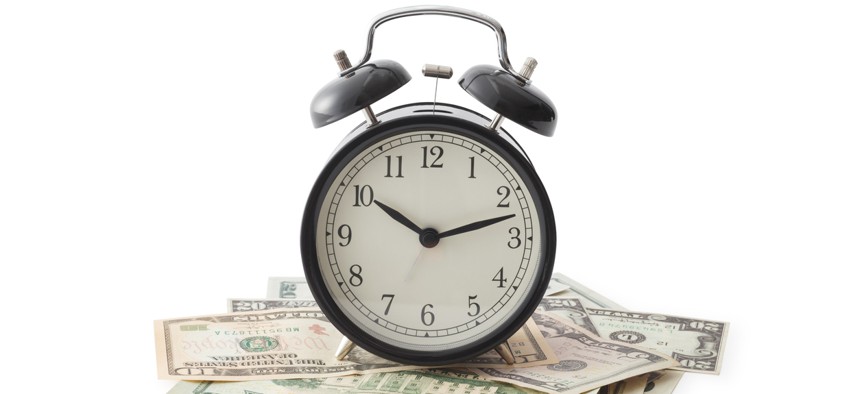
iStock.com/Sezeryadigar
‘When Will I Get My Money?’ and Other New Year Questions
Answers to reader queries about lump-sum payments, benefits and more.
Welcome to a new year—and for some of you, welcome to the first month of your life after retirement! If you’re in this group, you might be wondering when you will receive your lump sum payment for annual leave or your first retirement check. You might also be hoping that your first retirement payment reflects the high inflation rate of 2021.
Here are some of the common questions I get from employees who are transitioning to annuitant:
How is my lump sum annual leave check computed and when will I receive the money?
The payout of your annual leave balance is computed based on your hourly rate of basic pay. For example, if your final salary was paid at the GS-13, Step 10 rate in Washington, DC, your final salary was $134,798. However, on Jan. 2, 2022, that salary was increased to $138,868 when the federal pay raise approved by Congress went into effect. If you had gone on leave beginning Jan. 2 instead of retiring on Dec. 31, your annual leave would have been paid at the 2022 pay rate. The same is true for the lump sum payment for separated employees. According to OPM policy, “Generally, a lump sum payment will equal the pay the employee would have received had he or she remained employed until expiration of the period covered by the annual leave.”
To compute the value of this payment, you need to calculate your hourly pay rate by dividing your annual salary rate by 2,087 hours. In our example, the rate would be $66.54 per hour. If you’re cashing out 448 hours of leave (the 240 you carried over from 2020 to 2021 plus the 208 that you earned in 2021), then the gross payout would be $29,809.92—almost as if you had designed your own buyout.
How will the 2021 cost of living allowance increase affect my retirement if I retired on Dec. 31, 2021?
Unfortunately, you won’t receive any of the 2021 increase of 5.9% for those under the Civil Service Retirement System or 4.9% for those covered by the Federal Employees Retirement System. That’s because you weren’t retired during any of the 2021 rating period, which ran from December 2020 through November 2021. Your first COLA will be granted on Dec. 1, 2022 and paid in your January 2023 retirement payment as 11/12 of the 2022 COLA amount. Because you weren’t an annuitant until January 2022, your adjustment is prorated to reflect 11 months rather than the full annual COLA.
When will I receive my first retirement check?
That depends on several factors. The first is when your retirement application leaves your agency and arrives at OPM. Generally, this is shortly after you receive your last paycheck or within 30 days of your last work day.
Within days of receiving your retirement package at OPM, you will be assigned a Civil Service Active number that will identify you as an annuitant. OPM will ask for this number in any communications. If you haven’t received your CSA number yet, then any questions related to your retirement processing should be directed to the retirement specialist who processed your retirement at your former human resources office or to a supervisor from your former payroll provider.
Once you are assigned a CSA number, you will be provided instructions for signing into OPM Services Online, where you should find information about the status of your retirement claim. Your first check generally will arrive about six weeks after your retirement date, but there is no guarantee. Also, the first check is usually a partial or interim payment that could be significantly less than you are expecting.
Interim payments do not include the FERS supplement that FERS retirees who retire under age 62 with immediate, unreduced for age benefits are entitled to receive. If you submitted a court order for OPM to pay benefits to your former spouse, this also could cause your interim benefits to be significantly less than you expect. OPM won’t know how much to withhold from your check until its Court Order Benefits Branch has reviews the order.
You will continue in interim status until the final adjudication of your retirement application. This can take 30 days, 180 days or, in rare cases, even longer. Delays could be due to errors in the application when you completed it, such as neglecting to sign one of the pages, leaving an item unanswered or failing to include a copy of your marriage certificate. Your HR or payroll office also might make errors in completing their part of the application process. Processing at OPM can also be slowed by complications in your case, such as accounting for part-time service.
For all of these reasons, you should be prepared for it to take more than 30 days to process your retirement claim. It also might take longer than expected to receive your first withdrawal from your Thrift Savings Plan account, because you can’t file for a post-separation withdrawal until the TSP has been notified by your former payroll office that you are no longer an employee.
In addition to being patient with the whole process, It’s a good idea to have some cash on hand during the transition to annuitant status while you wait for the dust to settle.
NEXT STORY: More Details from the 2022 Pay Raise







